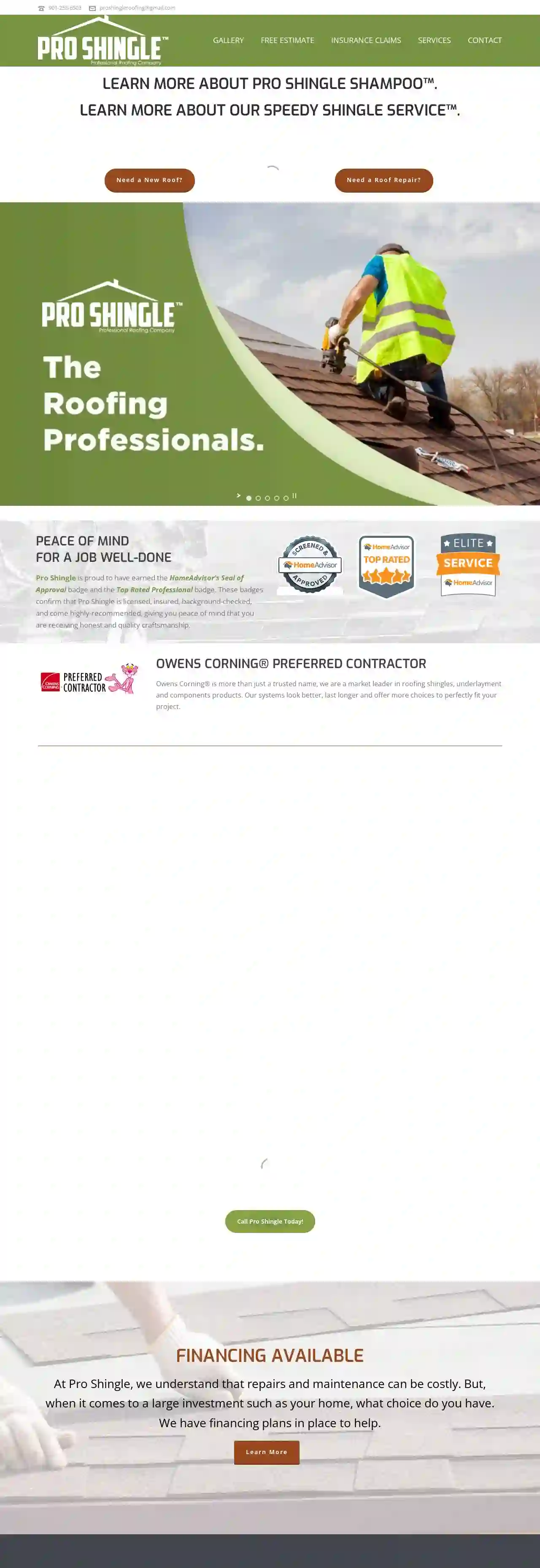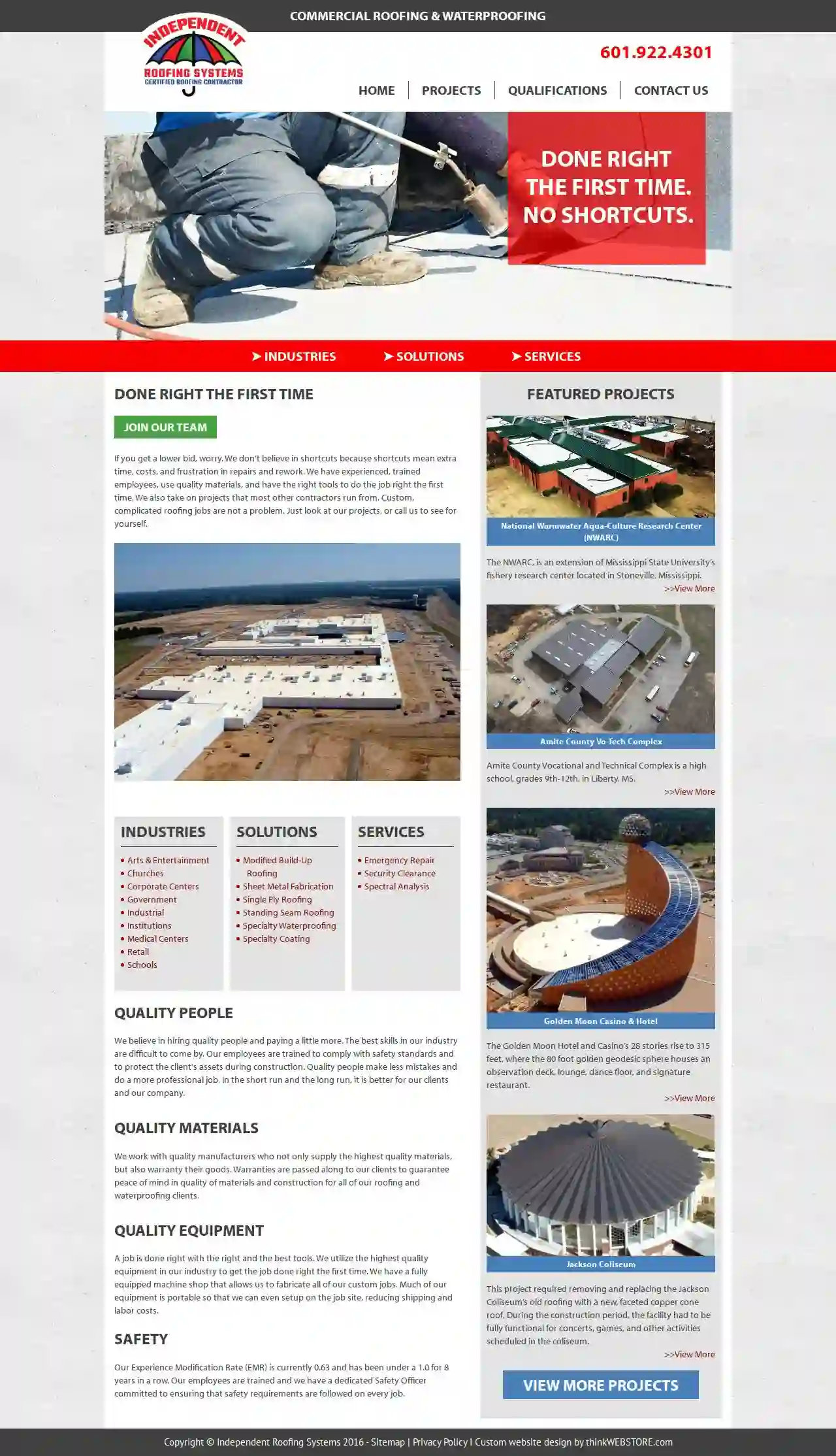Roofing Companies Brick
Find Roofing Company in Brick
Receive multiple Roofing Contractor quotes for your project today! Compare profiles, reviews, accreditations, portfolio, etc... and choose the best service.

TS Roofing Contractor - Quality Roofing Services, Residential Roof Repair, Affordable Roof Replacement Avenel NJ
537 reviewsAvenel, 07001, USAt TS Roofing Contractor, we are known to offer affordable roof replacement, installation, and repair services that give our clients great worth for their money. We can also install siding, fix chimneys, and handle masonry projects. We can spare you days of hard work by lending you a hand. Professional help is a call away! With over 10 years of experience, we have a team of well-trained and hard-working roofers who can organize and carry out different jobs with flying colors. We have armed our employees with top-grade instruments that allow them to perform even the most complex tasks with surgical precision. Our technical capacity in combination with our skillset enables us to offer our clients quality roofing services that are up to par with the highest standards of the industry.
- Services
- Why Us?
- Testimonials
- Gallery
Get Quote
4LC Roofing
Fort Wayne, IN, USA, 3472 Stellhorn Road, 46815, US4LC Roofing is a professional and affordable roofing company that provides top-notch services to its clients. With a team of knowledgeable and prompt experts, we ensure that our customers receive the best possible solutions for their roofing needs. Our services include roof installation, roofing repair, and gutter installation. We pride ourselves on our efficient, reliable, and exceptional work, and we are committed to making the process easy and stress-free for our clients. Contact us today to learn more about our services and how we can help you with your roofing needs.
- Services
- Why Us?
- Testimonials
- Gallery
Get Quote
Pro Shingle Roofing
4.645 reviewsJackson, USPro Shingle is a roofing company that offers a range of services, including roof maintenance, repair, and replacement. They use high-quality materials and have a team of experienced professionals who can help homeowners make informed decisions about their roofing needs. With a focus on customer satisfaction and peace of mind, Pro Shingle is a trusted choice for homeowners in Tennessee, Mississippi, and Arkansas.
- Services
- Why Us?
- Accreditations
- Gallery
Get Quote- Es
Estes Roofing LLC
4.716 reviewsJackson, USMeta © 2024
- Services
- Why Us?
- Gallery
Get Quote 
City Roofing
4.920 reviews197 Newark Ave, Jersey City, 07302, USAt City Roofing, you'll find a family run and owned business in Jersey City with years of experience. We are the roofers – all the work is carried out by us, not sub-contractors, so you know the quality is going to be high. With very low overheads we know we can deliver a high-quality package at an affordable rate. Our gutter cleaning staff work to strict safety standards to make sure your gutters are cleaned efficiently and effectively. We're proud of delivering a service that keeps customers coming back year after year. Our work ethic is simple – we turn up on time, don't leave any mess for you to clear up, and we aim to give you the most competitive prices we can. A new roof can be a daunting prospect. There are lots of things to consider, and some roofers will charge you a small fortune. Our detailed quotes outline everything that needs to be done, the associated costs, and even give you an idea of how long the work will take. With us you can rest easy, knowing you're paying a fair price for great work.
- Services
- Why Us?
- Testimonials
- Gallery
Get Quote
Yovani Roofing LLC
54 reviewsFort Wayne, USYovani Roofing LLC is a Fort Wayne, Indiana based roofing company with nine years of experience. We are dedicated to providing quality roofing solutions for your home, ensuring your peace of mind. Our team of skilled professionals offers a comprehensive range of services, from meticulous inspections and repairs to complete roof replacements. We pride ourselves on our commitment to transparency, integrity, and quality, treating every customer's home as our own. We believe in building lasting relationships with our clients by delivering exceptional service and exceeding expectations. Our mission is to provide reliable roofing solutions that safeguard your home and family. We strive to be the foremost choice in roofing services, admired for our dedication to excellence and customer satisfaction. We understand that your roof is a crucial part of your home's protection and value. That's why we utilize cutting-edge techniques and quality materials to ensure your roof stands resilient against the elements. Whether you need a minor repair or a complete overhaul, Yovani Roofing is here to help. Contact us today for a free estimate and experience the Yovani Roofing difference.
- Services
- Why Us?
- Gallery
Get Quote
True Roofing & Contracting
Suite A, 310 Hawthorne Cir, Ridgeland, 39157, USTrue Roofing & Contracting, LLC is a local, family-owned and operated Jackson, Mississippi, roofing contractor based in Ridgeland, MS. We have been roofing Jackson, MS, and the Greater Jackson Metro Community since 2014. Affordable Roof Replacement & Roof Repair Jackson, Mississippi. Roof repairs and replacements are essential parts of maintaining your home, albeit unenjoyable. At True Roofing In Jackson, MS, Our Roofing Company keeps it simple and honest just for people like you. That’s how pricing for roof repair and replacement in Jackson MS homeowners should be, and that is exactly what we deliver. Each home’s needs are unique, so we’ll work with you to determine which roofing services you need and which you don’t. You can quit searching for roofers near me and the best roofing company near me. You’ve found us! Whether it’s an old, leaky, or damaged roof, nip it in the bud with True Roofing and Contracting, professional roofers in Jackson MS. Click here or call 601-992-2323, to request a quote. With years of experience and a top-notch track record in and around Central Mississippi, you can be confident in making us your contractor of choice when searching for roofers in Jackson MS.
- Services
- Why Us?
- Gallery
Get Quote
Independent Roofing Systems
4.38 reviewsPearl, 175 Excell Drive, 39208, USDone Right The First Time JOIN OUR TEAM If you get a lower bid, worry. We don’t believe in shortcuts because shortcuts mean extra time, costs, and frustration in repairs and rework. We have experienced, trained employees, use quality materials, and have the right tools to do the job right the first time. We also take on projects that most other contractors run from. Custom, complicated roofing jobs are not a problem. Just look at our projects, or call us to see for yourself. Industries Arts & Entertainment Churches Corporate Centers Government Industrial Institutions Medical Centers Retail Schools Solutions Modified Build-Up Roofing Sheet Metal Fabrication Single Ply Roofing Standing Seam Roofing Specialty Waterproofing Specialty Coating Services Emergency Repair Security Clearance Spectral Analysis
- Services
- Why Us?
- Our Team
- Gallery
Get Quote
Home Pro Windows, Roofing, Siding & Doors
3.994 reviews6011 Highview Dr Suite D, Fort Wayne, 46818, USHome Pro Windows, Roofing, Siding & Doors, LLC is a company that has been in business for over 40 years, providing high-quality services to individuals in the Fort Wayne, IN area. We offer a wide range of services, including asphalt roofing, metal roofing, siding installation, and door replacement. Our team of experts has the skills and experience to handle any project, from small repairs to large-scale installations. We pride ourselves on providing outstanding customer service and using only the highest-quality materials. Whether you're looking to replace your roof, install new siding, or upgrade your doors, we're here to help. Contact us today to schedule a consultation and take the first step towards transforming your home.
- Services
- Why Us?
- Accreditations
- Gallery
Get Quote
Southern Summit Roofing and Construction
523 reviewsJackson, USElevate Your Roof with Southern Summit Excellence Elevate Your Roofing Experience with Southern Summit: Your Trusted Partner for Quality Roofing Solutions. We’re Your Peak Choice for Expertise, Reliability, and Excellence in Every Project. Schedule an Inspection About Us Southern Summit Roofing Your Roofing Experts At Southern Summit Roofing, we’re more than just a roofing company – we’re your trusted partners in safeguarding your home. With a name synonymous with quality and excellence, we have a heart for service in Mississippi.At Southern Summit Roofing and Construction, Our mission revolves around four pillars: Integrity, Work Ethic, Commitment, and Communication. We pledge unwavering integrity, ensuring honesty, transparency, and accountability in all our dealings. Our relentless work ethic drives us to deliver top-quality craftsmanship in every project. We are committed to exceeding expectations, tailoring solutions to our clients’ unique needs. Transparent and open communication is our foundation, fostering trust and collaboration. We aspire to set the industry standard in these core values, building lasting partnerships based on trust and excellence. About US
- Services
- Why Us?
- Gallery
Get Quote
Over 17,196+ Roofers onboarded
Our roofing experts operate in Brick & beyond!
Roofyng.com has curated and vetted Top Roofers near Brick. Find a reliable contractor today.
Frequently Asked Questions About Roofing Companies
- Home Improvement Loans: Offered by banks or credit unions.
- Home Equity Loans or Lines of Credit: Use your home's equity as collateral.
- Government Programs: Check for energy efficiency rebates or grants.
- Contractor Financing: Some roofing companies offer financing plans.
- Choose Reflective Roofing Materials: Opt for light-colored shingles or metal roofing that reflects sunlight and reduces heat absorption.
- Install Proper Attic Insulation: Adequate insulation prevents heat loss in the winter and heat gain in the summer.
- Ensure Adequate Ventilation: Proper attic ventilation allows hot air to escape, reducing cooling costs and extending the lifespan of your roof.
- Consider a Radiant Barrier: In hot climates, a radiant barrier installed in the attic can reflect heat away from the roof, further reducing cooling needs.
- Asphalt Shingles: 20-30 years
- Metal Roofing: 40-70 years
- Tile Roofing: 50-100 years or more (clay and slate)
- Flat Roofing: 15-30 years (depending on material)
- Slate: 100 years or more
- Wood Shakes or Shingles: 30-50 years (with proper maintenance)
- Leaks or Water Stains: Water stains on ceilings or walls, dripping water, or dampness in the attic.
- Missing, Cracked, or Curled Shingles: Inspect for damaged or missing shingles, especially after a storm.
- Damaged Flashing: Look for rust, corrosion, or gaps in flashing around chimneys, vents, or skylights.
- Sagging or Uneven Rooflines: A sagging roof could indicate structural problems.
- Granule Loss: Excessive granules in gutters suggest aging asphalt shingles.
- Moss or Algae Growth: Can trap moisture and damage roofing materials.
How can I get financing for a new roof?
How can I make my new roof more energy-efficient?
How long does a roof typically last?
What are some common signs of roof damage?
How can I get financing for a new roof?
- Home Improvement Loans: Offered by banks or credit unions.
- Home Equity Loans or Lines of Credit: Use your home's equity as collateral.
- Government Programs: Check for energy efficiency rebates or grants.
- Contractor Financing: Some roofing companies offer financing plans.
How can I make my new roof more energy-efficient?
- Choose Reflective Roofing Materials: Opt for light-colored shingles or metal roofing that reflects sunlight and reduces heat absorption.
- Install Proper Attic Insulation: Adequate insulation prevents heat loss in the winter and heat gain in the summer.
- Ensure Adequate Ventilation: Proper attic ventilation allows hot air to escape, reducing cooling costs and extending the lifespan of your roof.
- Consider a Radiant Barrier: In hot climates, a radiant barrier installed in the attic can reflect heat away from the roof, further reducing cooling needs.
How long does a roof typically last?
- Asphalt Shingles: 20-30 years
- Metal Roofing: 40-70 years
- Tile Roofing: 50-100 years or more (clay and slate)
- Flat Roofing: 15-30 years (depending on material)
- Slate: 100 years or more
- Wood Shakes or Shingles: 30-50 years (with proper maintenance)
What are some common signs of roof damage?
- Leaks or Water Stains: Water stains on ceilings or walls, dripping water, or dampness in the attic.
- Missing, Cracked, or Curled Shingles: Inspect for damaged or missing shingles, especially after a storm.
- Damaged Flashing: Look for rust, corrosion, or gaps in flashing around chimneys, vents, or skylights.
- Sagging or Uneven Rooflines: A sagging roof could indicate structural problems.
- Granule Loss: Excessive granules in gutters suggest aging asphalt shingles.
- Moss or Algae Growth: Can trap moisture and damage roofing materials.